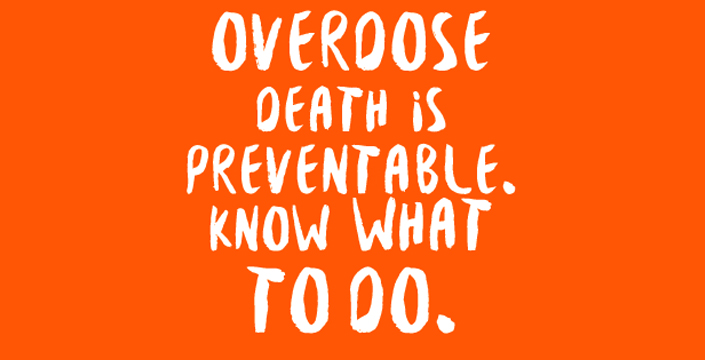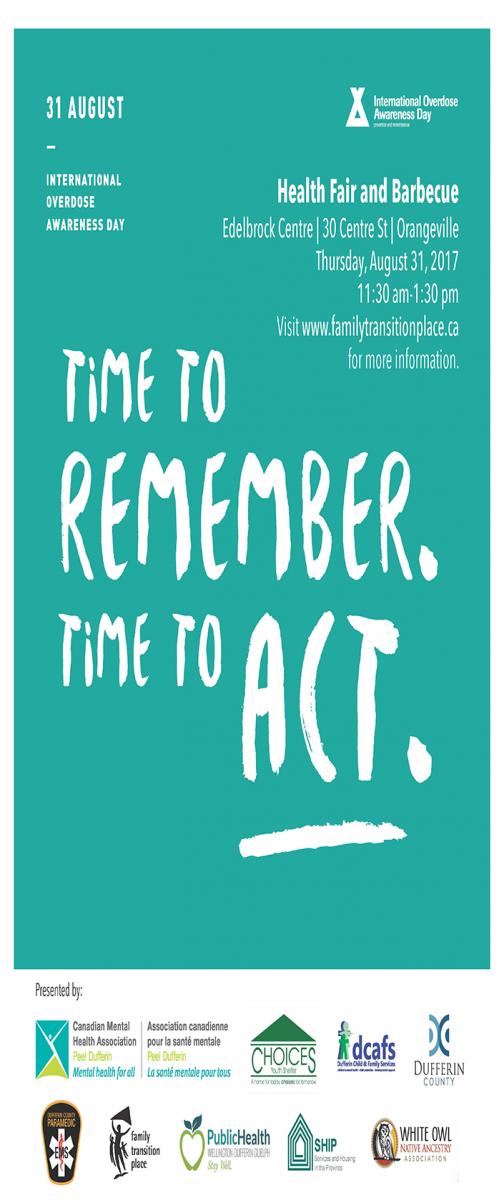
It seems as though every time I turn on the radio or TV, I hear about another tragic drug overdose. Since working for WDG Public Health, every time I see my mom (which is often!) she hands over several articles that she cut out of the newspaper for me to read on the opioid crisis. In Ontario, opioid misuse (including prescription and “street” drugs) is now the third leading cause of accidental death. This is a real concern in Ontario, and our community is not an exception to this crisis.
Recent data released by Public Health Ontario reveals that rates of opioid-related harms from 2003-2016 in Wellington, Dufferin, and Guelph, including Emergency Department visits and hospitalizations, are often significantly higher than Ontario rates. The need to act fast is palpable.
August 31 is International Overdose Awareness Day. This day aims to:
- Raise awareness of overdose and reduce the stigma of a drug-related death.
- Acknowledge the grief felt by families and friends who have lost a loved one or experienced a permanent injury as a result of drug overdose.
- Spread the message that the tragedy of overdose is preventable.
While overdose is preventable, it is certainly no easy feat. A comprehensive strategy that includes surveillance, prevention (including the root causes of drug misuse), harm reduction, treatment, and enforcement is necessary.
One critical component to preventing fatal drug overdose, is the expansion of access to Naloxone. Naloxone is a medication that temporarily reverses the effects of an overdose from opioids (e.g., heroin, methadone, fentanyl, morphine, oxycodone). It can be injected into the body or sprayed into the nose. Training on overdose prevention, recognition, and response (including calling 911, naloxone administration, chest compressions and rescue breathing) saves lives and can prevent brain damage due to lack of oxygen in opioid overdose situations.
Because the majority of overdoses happen in the company of others, naloxone provides an effective way to prevent deaths and reduce the harms associated with overdose while waiting for first responders to arrive. As part of the government of Ontario’s opioid strategy, naloxone is now available free of charge for those at risk of opioid overdose and to those who are able to help someone at risk of an overdose (e.g., family members, friends, people who work with or interact with those at risk) at select pharmacies, community organizations, and provincial correctional facilities across Ontario.
Getting a naloxone kit could help save a life! Find out where you can get one at ontario.ca or join us at the International Overdose Awareness Day BBQ in Orangeville to pick one up!
Remember that overdose is preventable and everyone can be involved in the solution – even if it is just becoming more aware of the issue, and helping to reduce stigma and increase compassion for others.
Join us in Orangeville!
On August 31, 2017 from 11:30 a.m. – 1:30 p.m., WDG Public Health along with community partners, will be hosting a BBQ at Edelbrock Centre to raise awareness of overdose and reduce the stigma of drug-related death. Individuals and families affected by this issue will say a few words and there will be a moment of silence. Expired and unwanted prescriptions can be dropped off at the event, and naloxone kits will be available for pick up.
For more information, visit familytransitionplace.ca.

